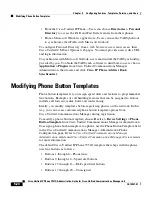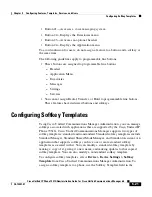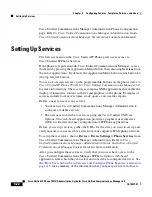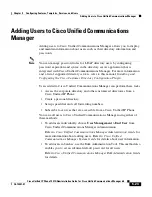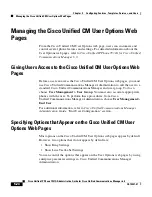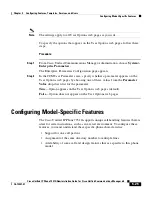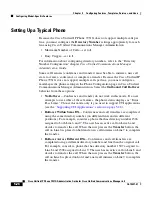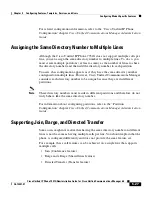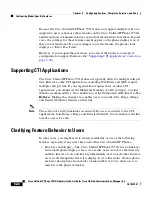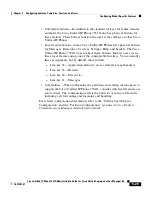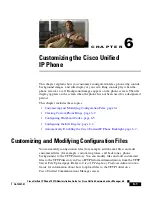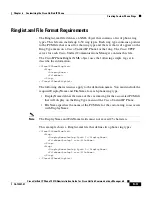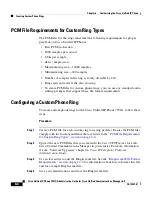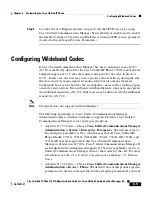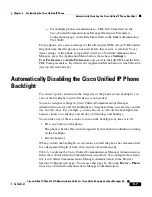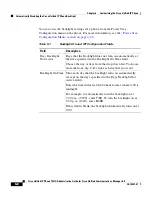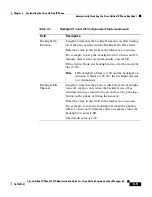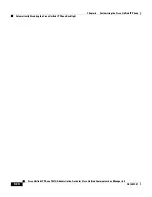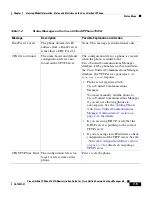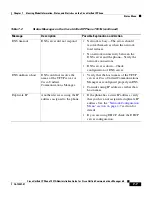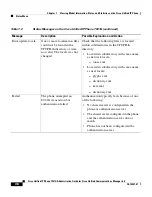
Chapter 6 Customizing the Cisco Unified IP Phone
Creating Custom Phone Rings
6-4
Cisco Unified IP Phone 7931G Administration Guide for Cisco Unified Communications Manager 6.0
OL-12457-01
PCM File Requirements for Custom Ring Types
The PCM files for the rings must meet the following requirements for proper
playback on Cisco Unified IP Phones:
•
Raw PCM (no header)
•
8000 samples per second
•
8 bits per sample
•
uLaw compression
•
Maximum ring size—16080 samples
•
Minimum ring size—240 samples
•
Number of samples in the ring is evenly divisible by 240.
•
Ring starts and ends at the zero crossing.
•
To create PCM files for custom phone rings, you can use any standard audio
editing packages that support these file format requirements.
Configuring a Custom Phone Ring
To create custom phone rings for the Cisco Unified IP Phone 7931G, follow these
steps:
Procedure
Step 1
Create a PCM file for each custom ring (one ring per file). Ensure the PCM files
comply with the format guidelines that are listed in the
“PCM File Requirements
for Custom Ring Types” section on page 6-4
.
Step 2
Upload the new PCM files that you created to the Cisco TFTP server for each
Cisco Unified Communications Manager in your cluster. For more information,
see the “Software Upgrades” chapter in
Cisco IP Telephony Platform
Administration Guide.
Step 3
Use an text editor to edit the Ringlist.xml file. See the
“Ringlist.xml File Format
Requirements” section on page 6-3
for information about how to format this file
and for a sample Ringlist.xml file.
Step 4
Save your modifications and close the Ringlist.xml file.

